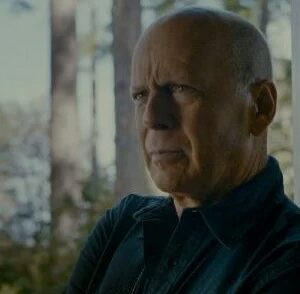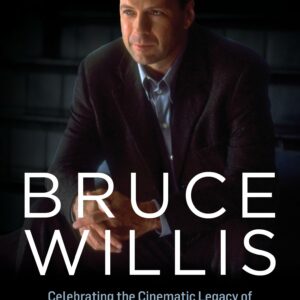Introduction
World War Z, directed by Marc Forster and starring Brad Pitt, is more than just a zombie movie; it’s a visceral cinematic journey through a world ravaged by a pandemic. Pitt’s portrayal of Gerry Lane, a former United Nations investigator tasked with stopping the global zombie outbreak, anchors the film with a sense of urgency and determination. Yet, as iconic as Pitt’s role is, there’s another powerful element propelling this movie: its evocative music and meticulous sound design. Every note and every sound immerses viewers into the tension and chaos of a world overrun by the undead, intensifying the fear and uncertainty of survival. From the opening scenes to the closing credits, the film’s music and soundscape play a fundamental role in shaping its atmosphere, making World War Z not only a visual experience but an aural one as well.
Setting the Tone with Music
In World War Z, the soundtrack is not merely an accessory but a cornerstone of the film’s mood, and British composer Marco Beltrami, known for his mastery in suspense and horror, is the architect of this sonic landscape. The music combines a sense of urgency with dread, immediately pulling viewers into a world where time is of the essence and every second counts.
The opening sequence of World War Z lays out this tone with an unsettling, suspense-filled score that foreshadows the chaos to come. The music here is minimalistic yet powerful, relying on repetitive, tension-building rhythms and low-frequency rumbles that capture the essence of a world on the brink. Beltrami’s use of minor chords and escalating tempos mirror the rising panic and unpredictability, immersing audiences in a climate of unease. Each scene transition, each encounter, is amplified by these musical choices, making the viewer feel as though they are alongside Gerry Lane, navigating a world that could explode into chaos at any moment.
One of Beltrami’s brilliant techniques is the use of dissonance, especially in scenes that feature the spreading infection. Rather than offering viewers a sense of release, the music heightens the feeling of tension. The pulsing beats and haunting motifs are relentless, amplifying the dread and sense of claustrophobia as cities fall to the ravenous undead. It’s a sound that sticks, evoking the primal fear of an unstoppable force — a perfect auditory match for the horror that is unfolding visually.
Sound Design for Heightened Reality
While the soundtrack lays the emotional groundwork, the sound design elevates it to an intense, immersive experience. Sound designer Nigel Stone brings the chaos and panic of the apocalypse to life through an array of sound effects that feel startlingly real. Each scene brims with layered soundscapes, from the distant cries of people in despair to the piercing screams of the infected. These sound elements ground the supernatural horror in a reality that is both terrifying and palpable.
One particular technique that enhances the horror is the strategic use of silence. In several scenes, particularly when Gerry and his team are on the verge of danger, all ambient sounds are stripped away. This abrupt silence serves as a psychological tool, lulling viewers into a false sense of calm and drawing them in closer, only for the tension to snap with sudden loud noises — perhaps a distant scream or the deafening groans of a zombie. This technique keeps audiences on edge, as they’re unable to anticipate the next source of terror.
The chaos of large-scale outbreaks is underscored by an overwhelming assault of sounds, where gunfire, explosions, and human screams blend into a cacophony that reflects the sheer disarray of a world in collapse. Contrasting these moments, smaller, more intimate scenes are marked by subtle, yet equally terrifying, sound effects: the rasping breaths of the infected or the faint, rhythmic scraping of a door. These quieter sounds act as harbingers of dread, making each noise carry weight and suggesting that danger lurks in every corner.
Music as a Character in the Film
In many ways, the soundtrack of World War Z transcends its role as background music, taking on the qualities of an additional character. The music doesn’t just follow Gerry Lane; it accompanies him, mirroring his emotional state and the high-stakes journey he undertakes. This auditory partnership between character and soundtrack deepens the viewers’ emotional connection to Gerry’s plight, reinforcing his role as both a savior and a survivor.
Certain musical cues become intertwined with Gerry’s identity. When he faces particularly harrowing situations, the score swells in a way that suggests resilience and determination, almost as though the music itself is urging him forward. As Gerry races to uncover the source of the infection, the music mirrors his urgency and desperation, often escalating in pace and intensity. In scenes where he contemplates the gravity of the pandemic’s impact, the score becomes introspective, underlining his internal struggle and the weight of his responsibility.
Perhaps most compelling is how the soundtrack seems to adapt as Gerry evolves. As he moves from mere survival to actively seeking a solution, the music becomes more triumphant, a subtle indication of hope amid the pervasive despair. This shift is particularly evident in the climactic moments, where the soundtrack blends suspense and uplift, reflecting Gerry’s undying will to fight for his family and humanity.
Impact on Storytelling
Beyond adding atmosphere, music and sound design are integral to the storytelling of World War Z. Each beat, each auditory cue, works in harmony with the visual narrative, helping to convey themes of survival, hope, and the human instinct to fight against overwhelming odds. The soundscape accentuates the desperation, fear, and, ultimately, resilience that define the movie’s story.
One scene that illustrates this is Gerry’s daring escape from an infected city. Here, the music is a relentless crescendo, matching his frantic movements as he navigates through the chaos. Just as he narrowly escapes, the music releases into a softer, almost relieved note, reflecting the temporary safety he’s found. This musical journey draws the viewer into the emotional highs and lows that Gerry experiences, turning his struggle into something visceral and shared.
The role of sound is particularly poignant in scenes that highlight human connections amidst the apocalypse. Moments of silence are strategically placed during scenes with his family, allowing the viewer to feel the intimacy and vulnerability of these connections. The quiet moments serve as a stark contrast to the pandemonium, reminding viewers of what’s truly at stake: the safety of loved ones and the fragile hope of reunion. This interplay between loud, chaotic soundscapes and quiet, reflective silences encapsulates the dual themes of despair and hope that the film seeks to convey.
Legacy and Influence of the Soundtrack
The soundtrack of World War Z has left a lasting impact on the genre of apocalyptic thrillers, influencing how music and sound are employed to heighten tension and evoke fear. Its cultural influence can be seen in other films that seek to create an immersive experience through sound, where the auditory landscape is as important as the visual elements. The unique blend of dread-filled music with real-world sound effects has set a standard for how films approach the apocalypse genre.
Beyond its influence on other films, the World War Z soundtrack has resonated with audiences, becoming a memorable element of the movie’s identity. Fans of the film often cite the soundtrack as one of its defining features, with Beltrami’s compositions sparking conversations about how music can shape a viewer’s emotional experience. In a genre where visuals often take precedence, World War Z demonstrated the profound impact that a carefully crafted soundscape can have, solidifying its place as a benchmark in cinematic storytelling.
Conclusion
The music and sound design of World War Z elevate it beyond a typical thriller, enriching the cinematic experience with layers of emotion and intensity. Marco Beltrami’s haunting score and Nigel Stone’s meticulous sound effects immerse viewers in a world that feels as dangerous as it does real. Together, they shape the film’s atmosphere, accentuating every high-stakes moment and breathing life into scenes of both horror and humanity.
In World War Z, sound is not just an embellishment; it’s a force that drives the story forward, connecting viewers to Gerry Lane’s journey and amplifying the stakes of survival. This film serves as a testament to the power of music and sound design in crafting unforgettable narratives, reminding us that in a world silenced by chaos, sometimes it’s the sounds — or the silence — that stay with us the longest.





